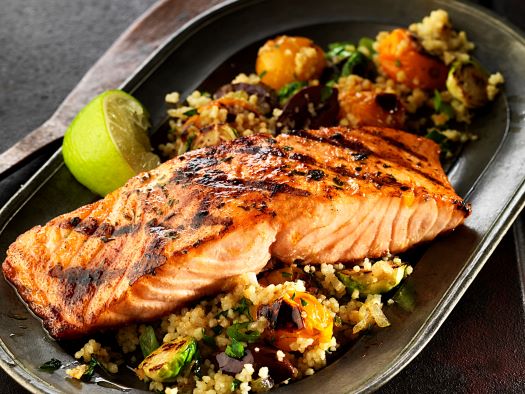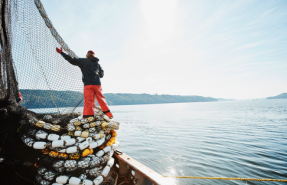EVEN THE BEST SEAFOOD IS ONLY AS GOOD AS HOW IT'S SERVED
Below you’ll find a few tips and tools to help educate your staff on how best to handle and serve seafood. If there are any questions you have that you don’t see covered, please contact us.

HEALTH BENEFITS
As a high-protein, low-fat food, and a great source of Omega-3 fatty acids and other vitamins, seafood is a great option for those seeking healthier options
.jpg)
QUALITY
Our seafood products are frozen immediately after harvesting to protect freshness and quality. If you have seafood with a pungent aroma—even supposedly fresh-caught—it’s something to avoid.

SUSTAINABILITY
Much more than a marketing buzzword, sustainability is our promise to catch and harvest seafood without damaging the ecosystem or putting undue strain on the fish populations.
Allergies & Cross-contamination
Many patrons may have seafood allergies, so it’s extremely important to be careful when handling such products. Cross-contamination occurs when the juices from raw meats or germs from other sources touch ready-to-eat foods and their proteins mix. Here are some tips to help prevent cross-contamination:
- Always thoroughly wash utensils, cutting boards, and pans with soap and water
- Keep all raw and cooked foods separate
- Ensure the utensils and cutting boards for raw meat, poultry, and seafood are different from the utensils and dishes you use for produce and ready-to-eat foods
- Store raw meat, poultry, and seafood under other items in sealed containers to ensure that juices do not drip onto ready-to-eat foods
- Always cook allergy-safe foods first
- Keep safe foods covered and away from other foods that might splatter
- Always wash your hands with soap and water before touching anything else if you’ve handled a food that patrons may be allergic to.
Preparation & Handling
The most important considerations in the safe handling of seafood are cleanliness, temperature, and time. Keep your hands, preparation area, and utensils clean; never let raw seafood come in contact with cooked foods. Follow the tips below to make sure every meal is as safe as it is delicious. If you’re looking for specific species information, visit our Species Mapping & Information page.
Freezing
Seafood is highly perishable. Immediately store frozen seafood in the coldest part of the freezer at a temperature as close to -20°F as possible. Commercially frozen seafood can be stored in the freezer for up to 6 months.
Thawing
Defrost fish overnight in the refrigerator to minimize moisture loss. A 1 lb. package will defrost within 24 hours. If you forget to take the seafood out of the freezer in time, place the package in the sink under cold, running water. Never defrost seafood at room temperature or with hot water as bacteria on the surface will begin to multiply.
Preparation
Always wash your hands with soap and warm water for at least 20 seconds before starting food preparation. Don’t let juices from raw seafood come into contact with other food. Wash down surfaces and utensils immediately after preparing seafood. Use a separate cutting board for raw seafood.
Cooking
Cook fish and shellfish thoroughly. Fish is cooked when it begins to flake and loses its translucent (raw) appearance. Cook fish until it reaches an internal temperature of 145°F for at least fifteen seconds. Scallops and shrimp turn firm and opaque when cooked. It takes 3 to 5 minutes to boil or steam one pound of medium-sized shrimp and 3 to 4 minutes to cook scallops. Seafood is usually cooked under moderate to high heat (425°F). You need a reliable, continuous heat source, so do not cook seafood on a hot plate. Avoid interrupted cooking—completely cook the seafood at one time.
microwave Cooking
If you are microwaving fish, be sure to rotate or stir halfway through the cooking process, cover to retain moisture, heat to an internal temperature of 170°F for 15 seconds, and allow to stand covered for 2 minutes after cooking.
serving
Never put cooked seafood back on the plate that held the raw product. Place leftovers in smaller containers and refrigerate them within 2 hours when the temperature of the food serving area is below 90°F and within 1 hour when the air temperature is 90°F or above.
Sources: eatright.org—Academy of Nutrition and Dietetics, "How to Prevent Cross-Contamination," June 2015. | FDA U.S. Food & Drug Administration, "Fresh and Frozen Seafood: Selecting and Serving It Safely," November 2017. | everyday HEALTH, "Tips for Allergy-Free Cooking," April 2014.

 EN
EN
 EN
EN